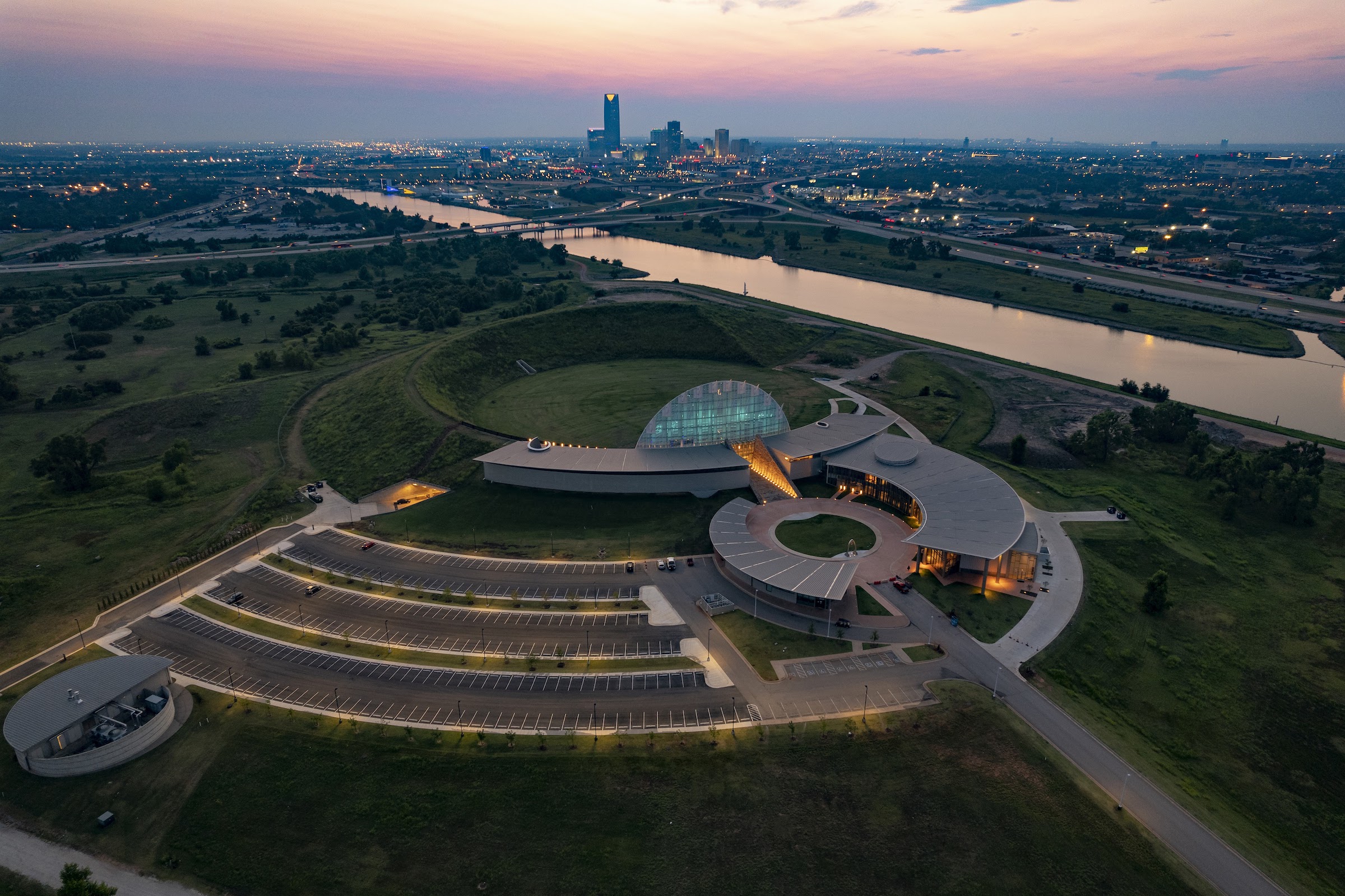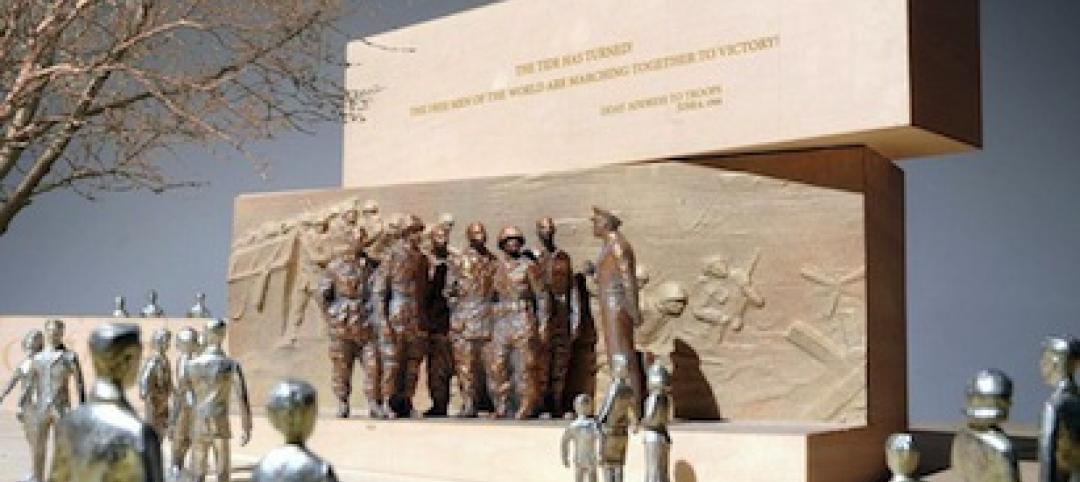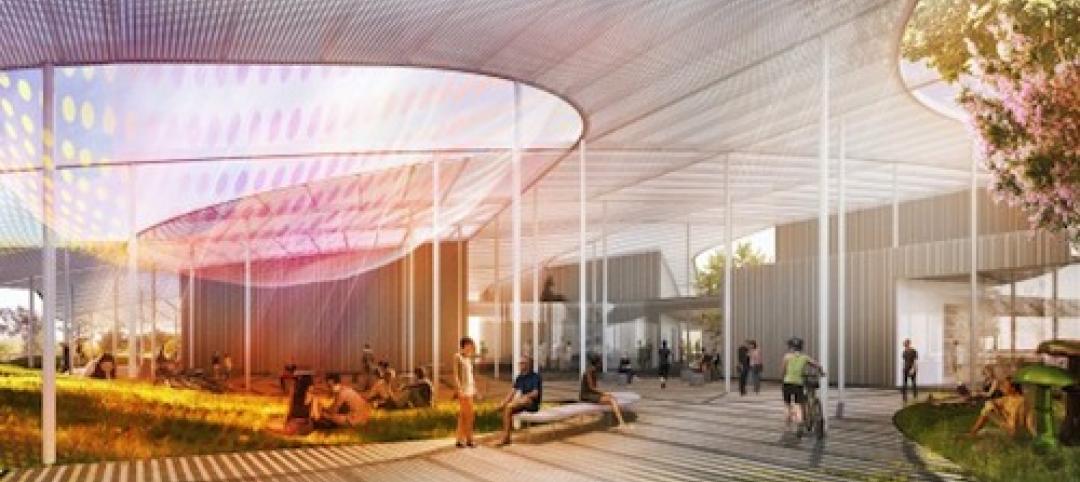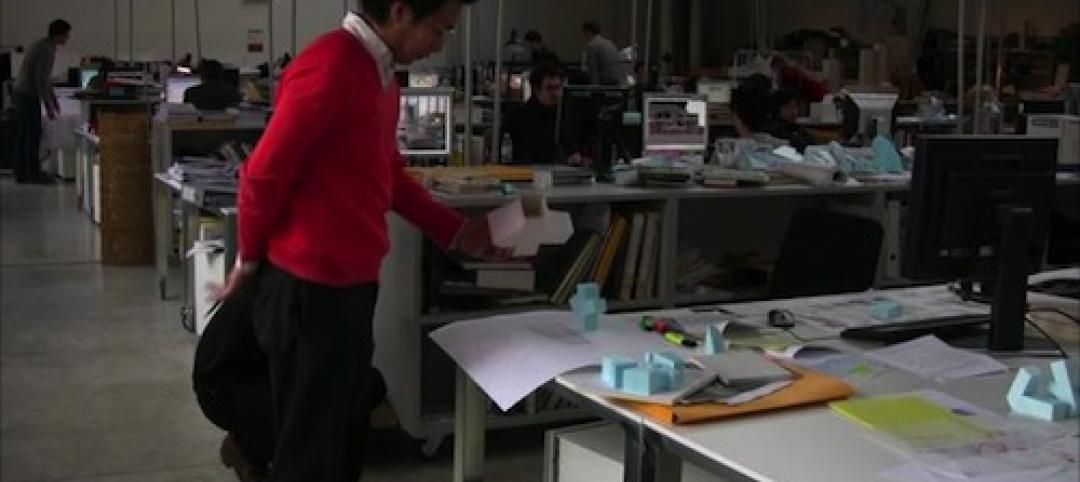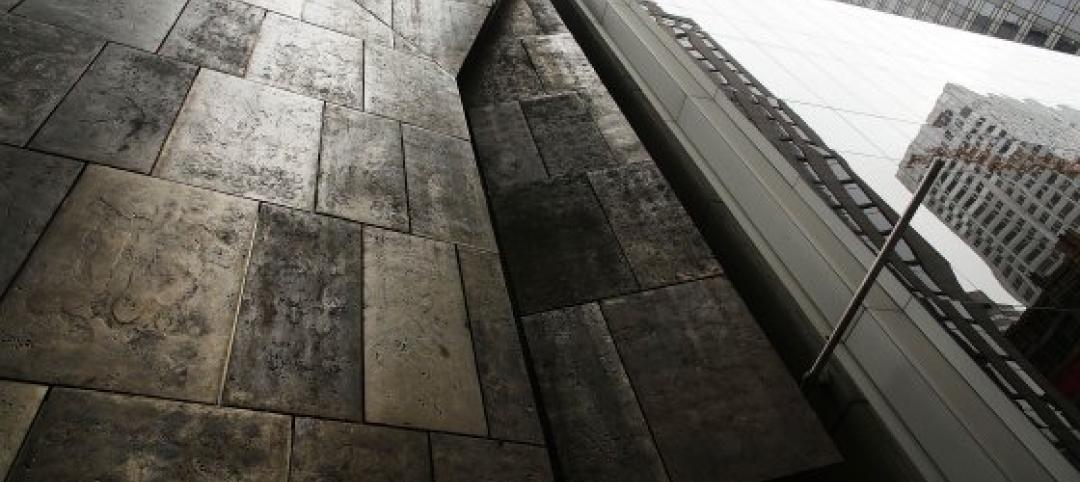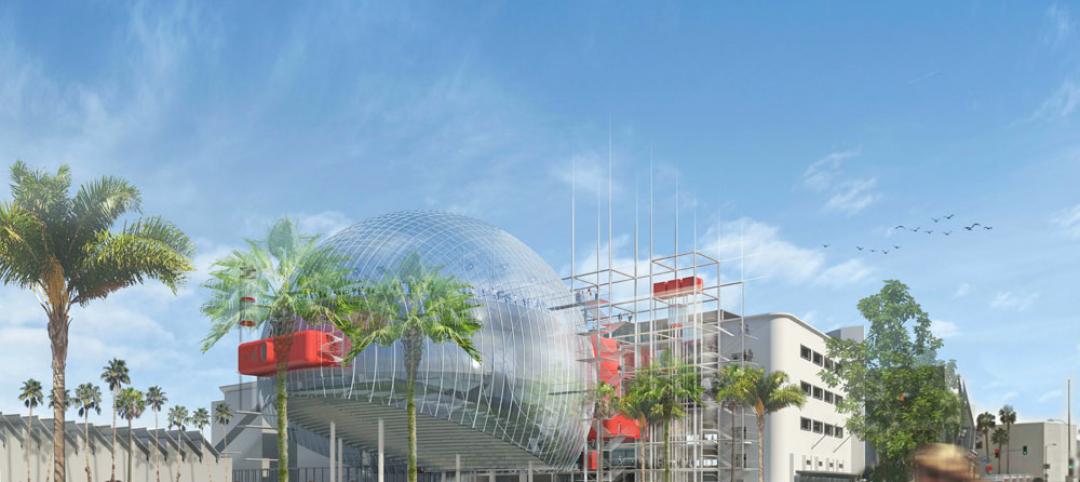First Americans Museum (FAM) in Oklahoma City honors the 39 tribes in Oklahoma today, reflecting their history through design metaphors of nature’s elements of earth, wind, water, and fire. The design concept includes multiple circles suggested by arcs, reflecting the native tradition of a circular worldview that encompasses the cycle of life, the seasons, and the rotation of the earth.
The central expression of this concept is a 1,000-sf-diameter spiral earthen mound rising to 90 feet at its peak. This element was constructed with 400,000 cubic yards of red earth fill from local construction sites. The spiral mound represents the earth and features a passageway through which the winter solstice is marked. The project was designed to align with the cardinal directions and serve as a cosmological clock, commemorating and honoring the special times of equinox and solstice.
The east-facing museum entrance, framed by stone walls, aligns with the sunrise of the vernal and autumnal equinoxes, with the sun rising directly in the center between the walls. During the winter solstice, the sun sets through the tunnel embedded into the FAM Mound; during the summer solstice, the sun sets at the peak of the mound.
The concept for the 175,000 sf museum building is a spiral that begins in the earth and ascends to the heavens. It is composed of two arcs: the western arc, featuring permanent and rotating exhibitions, and the northern arc that houses theaters, retail, dining, and other services. The arcs intersect at the 110-foot-tall prismatic glass structure that serves as both a starting point for visitors and a central gathering space. Three sky terraces (Sun, Moon, Stars) offer views of the Oklahoma River and Downtown Oklahoma City.
The radial geometries of the interior are organized to invoke a sense of curiosity and anticipation in visitors. Public spaces are bathed in natural light through full-height glass walls. Harmonizing manmade and natural elements, the museum’s interior palette includes warm wood wall paneling, steel-clad circular columns, concrete flooring, and custom wood-slat ceilings. Arcs and circles appear throughout in millwork, seating elements, and railings in harmony with the Native American belief that right angles trap the spirit.
“We conceived a story about the site that the land had been taken from the native peoples, stripped of its elements, and has now been returned to the Native Americans, who restored it to the way it once was,” says William Fain, Jr., FAIA, Managing Partner and Director of Urban Design and Planning at Johnson Fain. “The harmonious relationship between the building and the surrounding landscape is critical to telling the authentic Oklahoma Indian story.”
On the project team:
Owner and/or developer: American Indian Cultural Center Foundation (AICCF)
Design architect: Johnson Fain
Associate Architect of record: Hornbeek Blatt
MEP engineer: Darr & Collins, Stantec
Structural engineer: Arup; KFC Engineering; Nabih Youssef Associates
General contractor/construction manager: Centennial Builders—A Joint Venture of Flintco and Manhattan
Here is the full statement from the architecture firm and building owner:
Twenty-five years in the making, First Americans Museum (FAM) in Oklahoma City is a testament to mission and perseverance. It was created to honor the 39 tribes in Oklahoma today, reflecting their history through design metaphors of nature’s elements of earth, wind, water, and fire. Los Angeles architecture firm Johnson Fain, along with associated Oklahoma City firm Hornbeek Blatt and New York City-based landscape architect Hargreaves Jones, created a destination representing FAM’s mission to educate the public about the cultures, diversity, history, contributions, and resilience of Oklahoma’s First American Nations.
Working closely with tribal advisors, the design team interpreted native traditions into steel, glass, stone, wood, and sod. For the design, the architects have been awarded honors by chapters of the American Institute of Architects. AIA Los Angeles bestowed awards both when the project was on the boards prior to construction and for the realized building—one of a handful of projects to receive accolades at both stages. Closer to home, AIA Oklahoma also awarded the built design. “The difficult task of marrying the vernacular, the indigenous, and the technological is executed with clear intentions, thus producing an effective outcome,” notes the notoriously critical AIA LA jury panel.
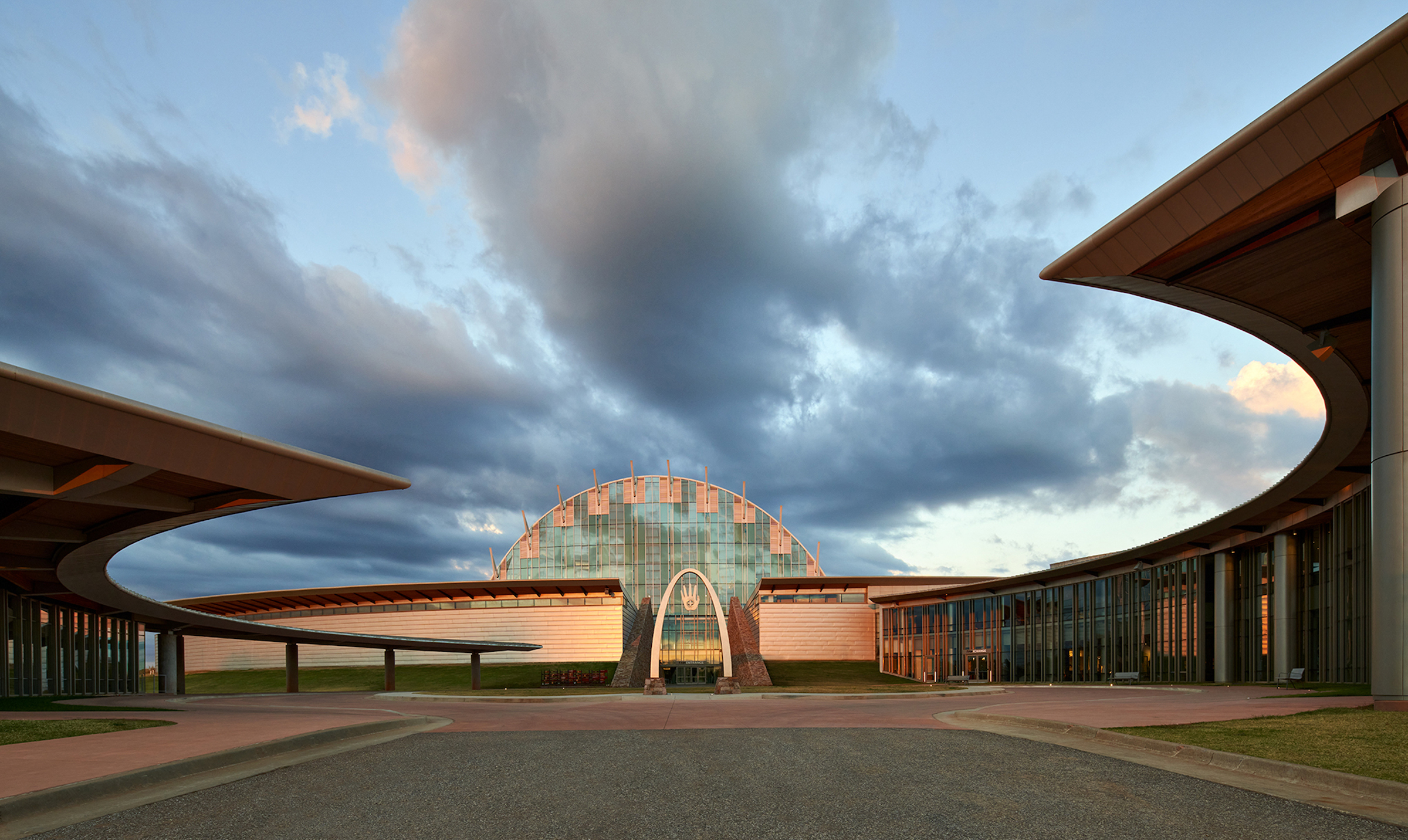
“At the First Americans Museum, conventional architectural strategies were dissolved by a highly iterative process that led to a new vocabulary of form drawn from an orientation to natural elements, shared space, and the freedom for visitors to pursue their own path of discovery,” says Scott Johnson, FAIA, Design Partner at Johnson Fain. “The design embodies multiple eternal concepts, such as time, generations, shelter, and identity.”
The project’s cultural and heritage advisor, Arizona State University professor Donald Fixico, shared with the design team the contrast of linear thinking in western culture versus the holistic, non-linear, “circular” ways the natives view the universe. Whereas western culture values land as a commodity, native cultures give spiritual value to it. Reflecting the native tradition of a circular world view—which encompasses the cycle of life, the seasons, and the rotation of the earth—the design evolved out of multiple circles suggested by arcs. The main expression of this is the 1,000-square-foot-diameter spiral FAM Mound rising to 90 feet at its peak, which became the central element of the master plan that Johnson Fain began in 1996. (The firm was also initially brought on for site selection prior to winning the building design.) A fortuitous gift of 400,000 cubic yards of red earth fill from local construction sites made this possible.
First Americans Museum tells the authentic Oklahoma Indian story
The museum’s location was originally Oklahoma Drilling Site #1 for the extraction of crude oil, thus Hargreaves Jones’ landscape plan called for cleanup and enhancement of the site, including the incorporation of native grasses and tree species. “We conceived a story about the site that the land had been taken from the native peoples, stripped of its elements, and has now been returned to the Native Americans, who restored it to the way it once was,” says William Fain, Jr., FAIA, Managing Partner and Director of Urban Design and Planning at Johnson Fain. “The harmonious relationship between the building and the surrounding landscape is critical to telling the authentic Oklahoma Indian story.”
While the spiral mound represents the earth and nature, the buildings express man-made technologies. The concept for the 175,000-square-foot museum is a spiral that begins in the earth and ascends to the heavens. It is composed of two arcs: the western arc featuring permanent and rotating exhibitions and the northern arc that houses theaters, retail, dining, and other services necessary in modern museums. The arcs intersect at the 110-foot-tall prismatic glass structure that serves as both a starting point for visitors and a central gathering space. Three sky terraces (Sun, Moon, Stars) offer views of the Oklahoma River and Downtown Oklahoma City.
The natural world is at the heart of the FAM experience, both physically and spiritually. As opposed to a museum conceived around conventional notions of form and sequence, FAM acknowledges the elements of nature—earth, wind, water, and fire. The spiral mound represents the earth and holds a passageway through which the winter solstice is marked. The entire project was designed to align with the cardinal directions and serve as a cosmological clock, commemorating and honoring the special times of equinox and solstice. The east-facing museum entrance framed by the stone walls aligns with the sunrise of the vernal and autumnal equinoxes, with the sun rising directly in the center between the walls. During the winter solstice, the sun sets through the tunnel embedded into the FAM Mound; during the summer solstice, the sun sets at the peak of the mound.
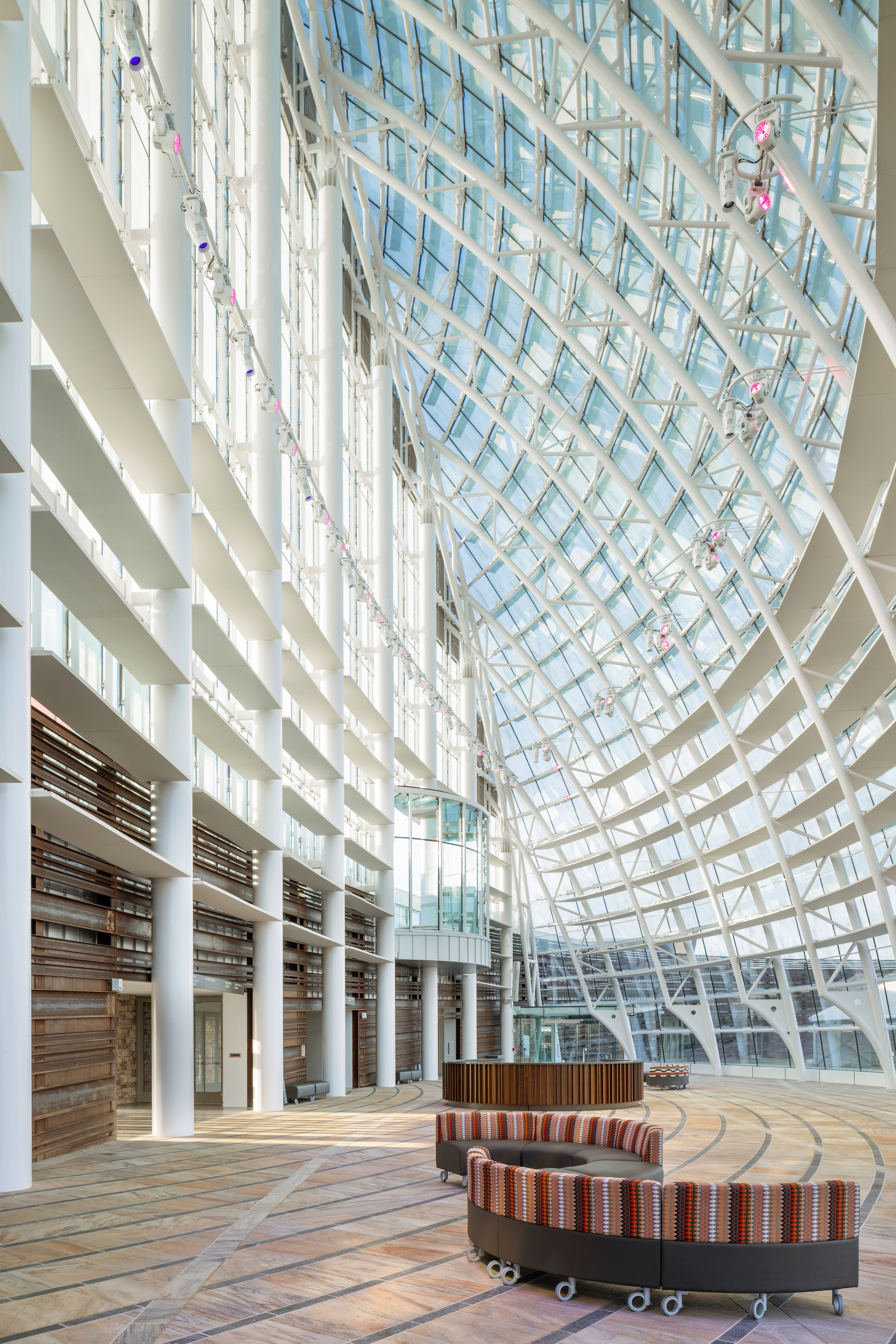
The radial geometries of the interior are organized to invoke a sense of curiosity and anticipation in visitors. Public spaces are bathed in natural light through full-height glass walls. Harmonizing manmade and natural elements, the museum’s interior palette includes warm wood wall paneling, steel-clad circular columns, concrete flooring, and custom wood-slat ceilings. Arcs and circles appear throughout in the forms of millwork, seating elements, and railings in harmony with the Native American belief that right angles trap the spirit.
The completion of the First Americans Museum, like the people whose stories it shares, was achieved in part because of the resilience of the project and the people behind it to persist during the past quarter century to assure its existence. The architecture is intentionally crafted to symbolically reinforce the historical context and the events that have shaped history, while also providing a neutral canvas for visitors to experience the artifacts, exhibitions, and historical narratives in a new way.
In addition to Johnson Fain (design architect), Hornbeek Blatt (associate architect), and Hargreaves Jones (landscape architect), key building team members include Ralph Appelbaum Associates (interpretive planner and exhibition designer), Arup (structural engineer), Centennial Builders—A Joint Venture of Flintco & Manhattan (construction managers), KFC Engineering (structural engineer), Lighting Design Alliance (lighting designer), Lord Cultural Resources (institution and cultural programming), Andrew Merriell Interpretive Planning and Design (concept exhibition designer), Harriet Spear Studio (wayfinding), Stantec (MEP engineer), Veneklasen Associates (acoustical engineer), David Weiner Design (lighting designer), and Nabih Youssef Associates (structural engineer), among many others.
ABOUT JOHNSON FAIN: During the past 34 years of professional experience in the United States and overseas, Johnson Fain has established itself as an architecture, planning, and interior design firm known for its creative approach to the built environment. Scott Johnson, FAIA, Design Partner, and William H. Fain, Jr., FAIA, Managing Partner and Director of Urban Design and Planning, lead a diversified office of 45 professionals. During the past decade, the American Institute of Architects has recognized Johnson Fain with numerous awards at the national, state, and local levels, including the AIA LA Gold Medal and AIA California Firm of the Year.
ABOUT FIRST AMERICANS MUSEUM (FAM): FAM originated as a project of the State of Oklahoma and was completed through a partnership between the State of Oklahoma and The City of Oklahoma City, with help of a Chickasaw Nation subsidiary, the American Indian Cultural Center Foundation, and numerous donors. The American Indian Cultural Center Foundation operates the museum on behalf of the City, and AICCM Land Development, LLC, is the developer of the surrounding property. James Pepper Henry—vice-chairman of the Kaw Nation—is the museum director/CEO.

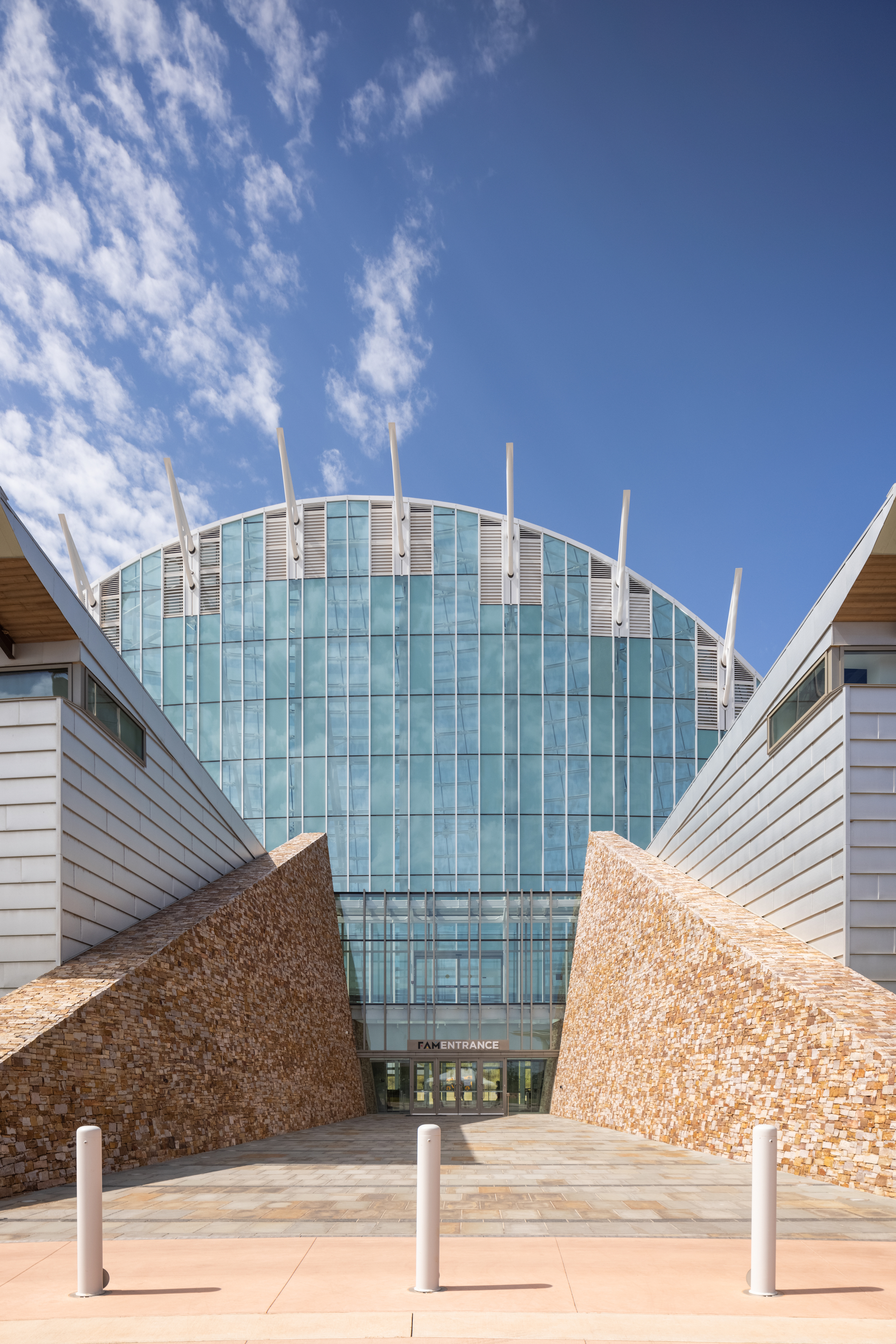
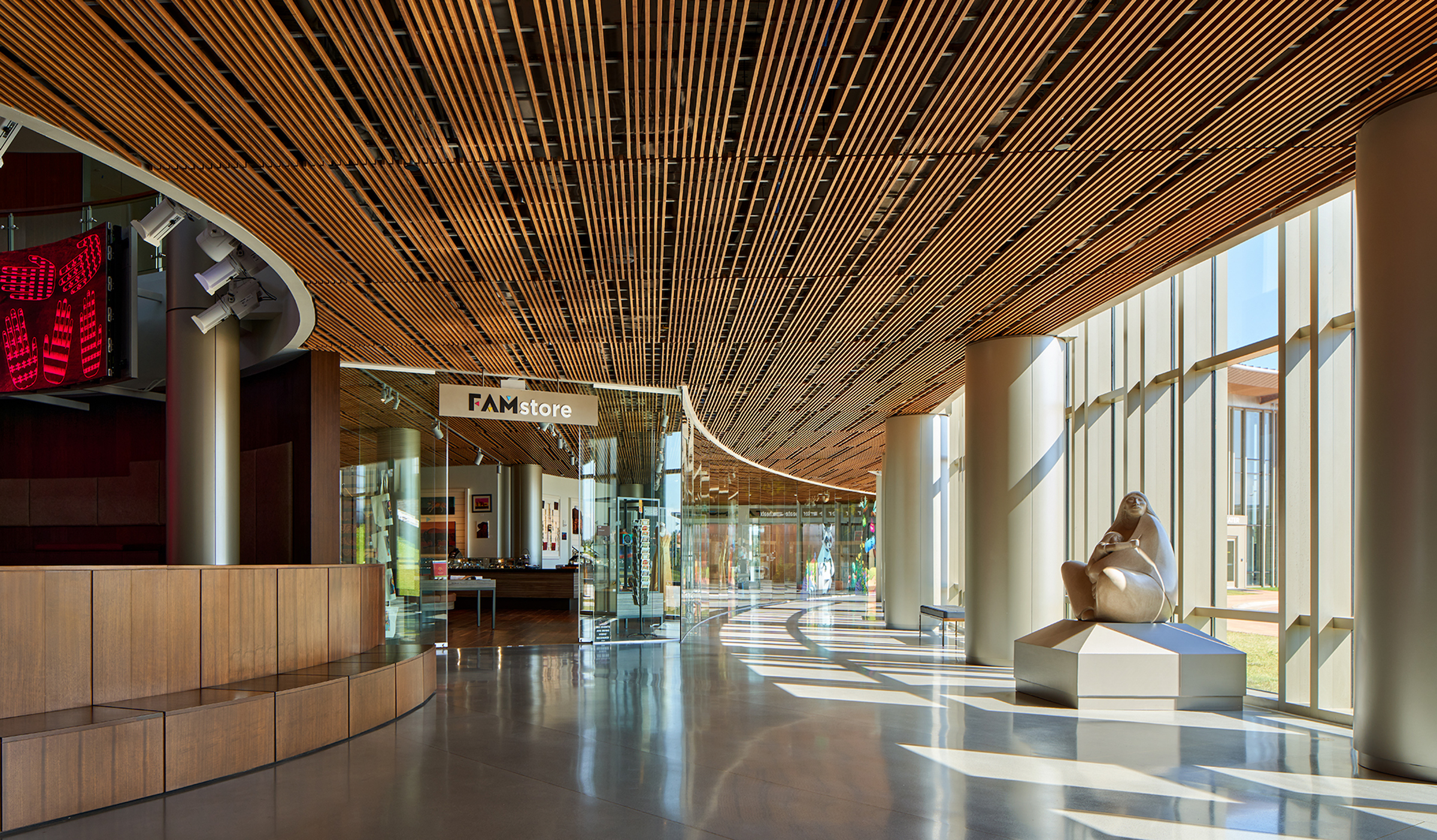
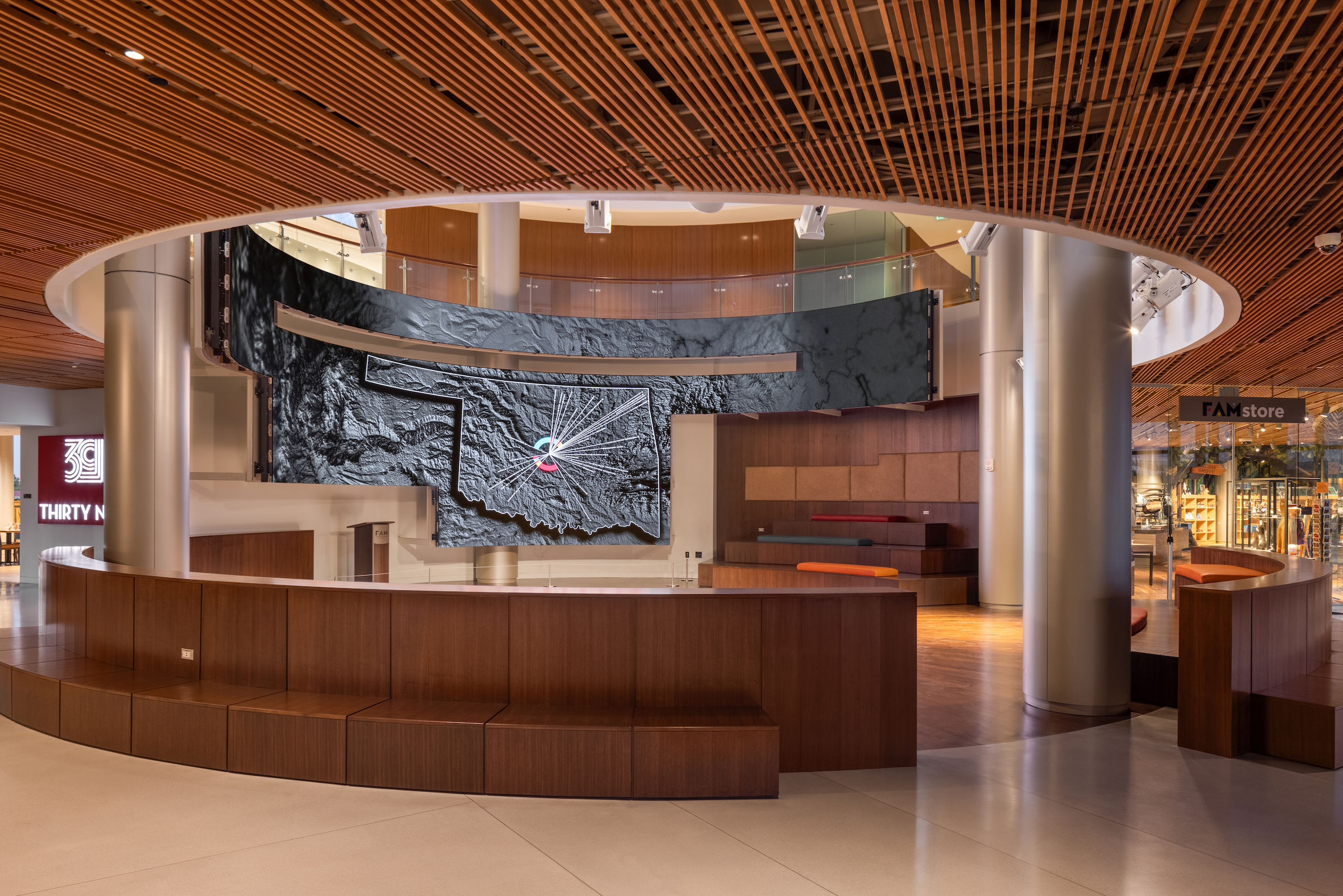
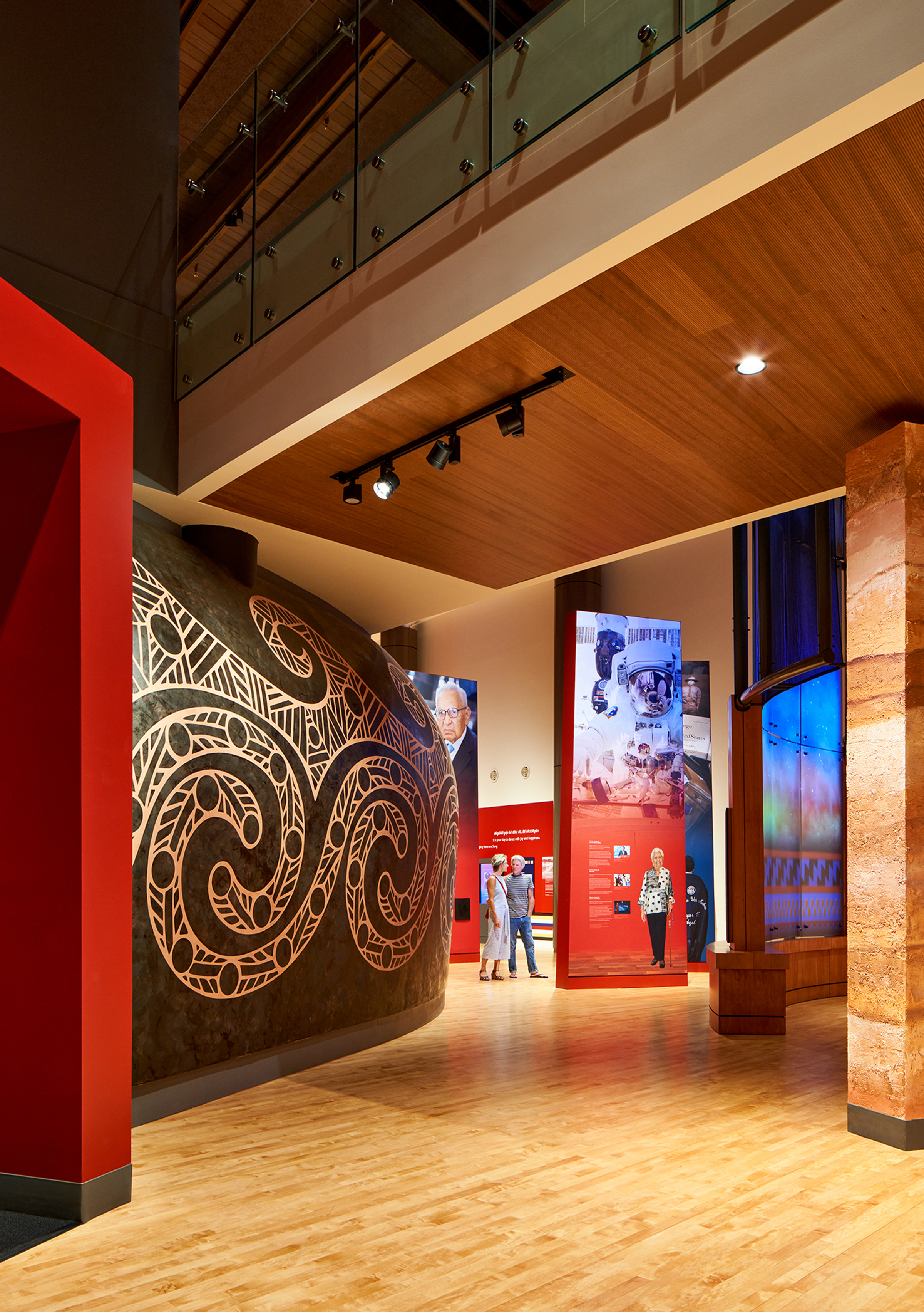
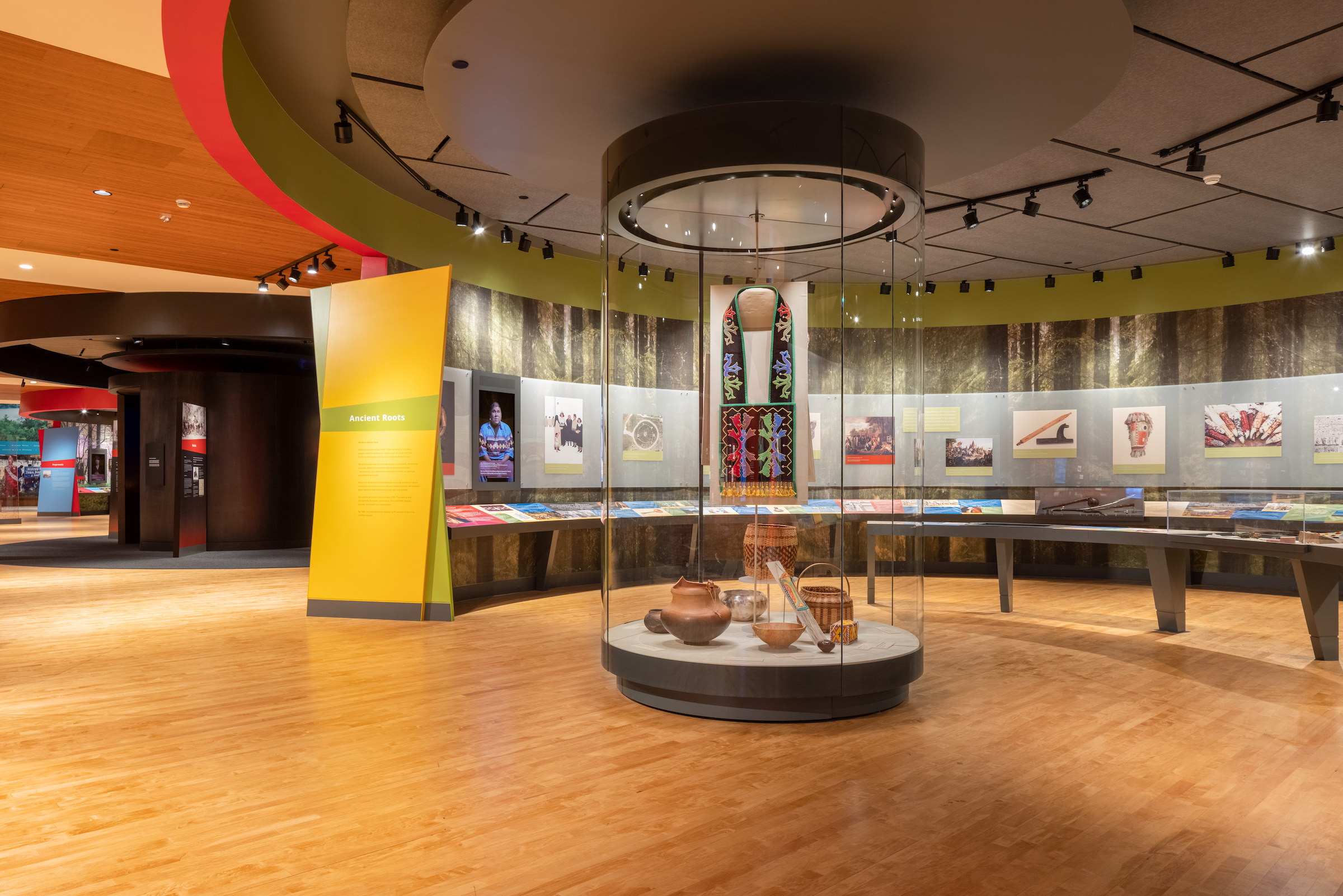

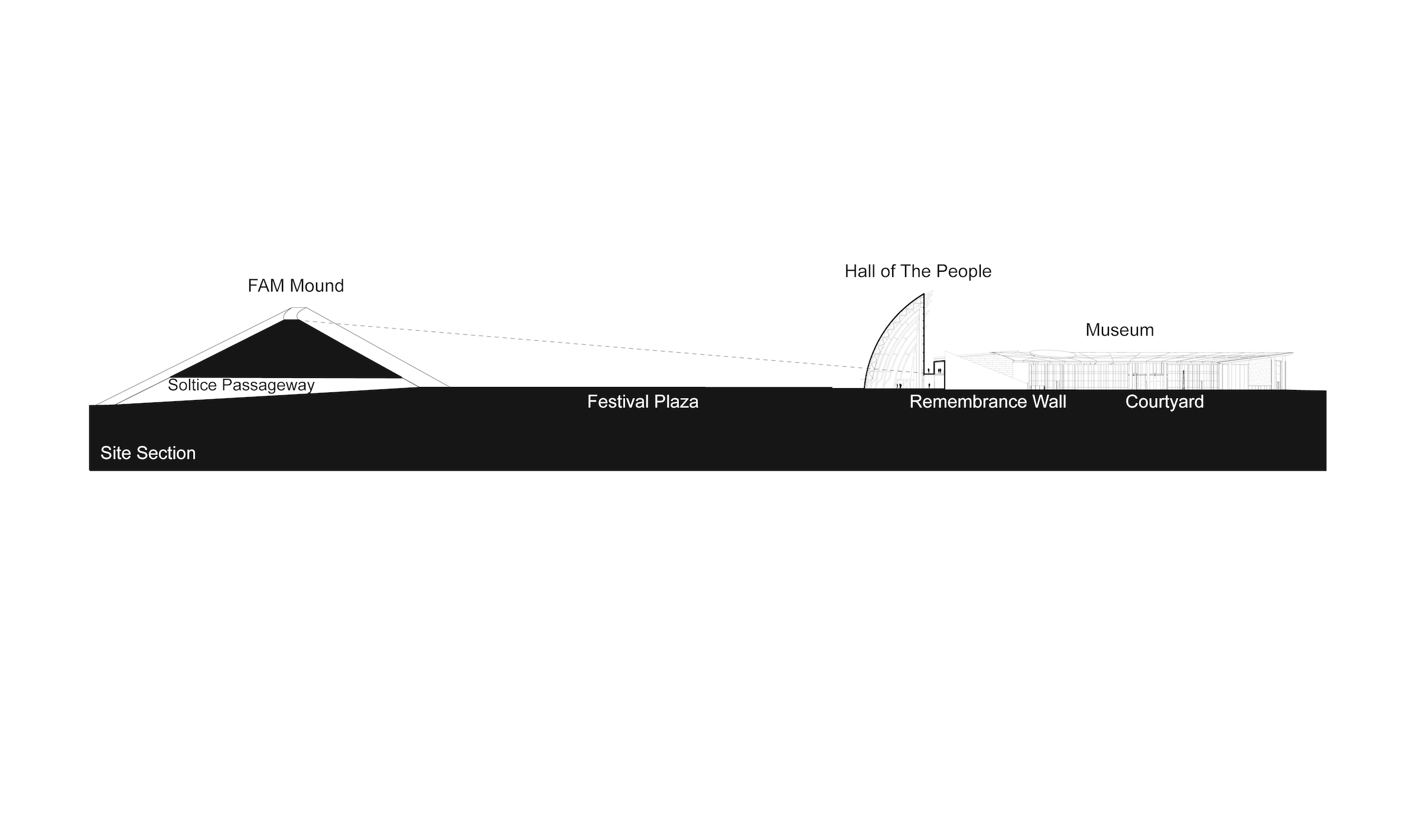
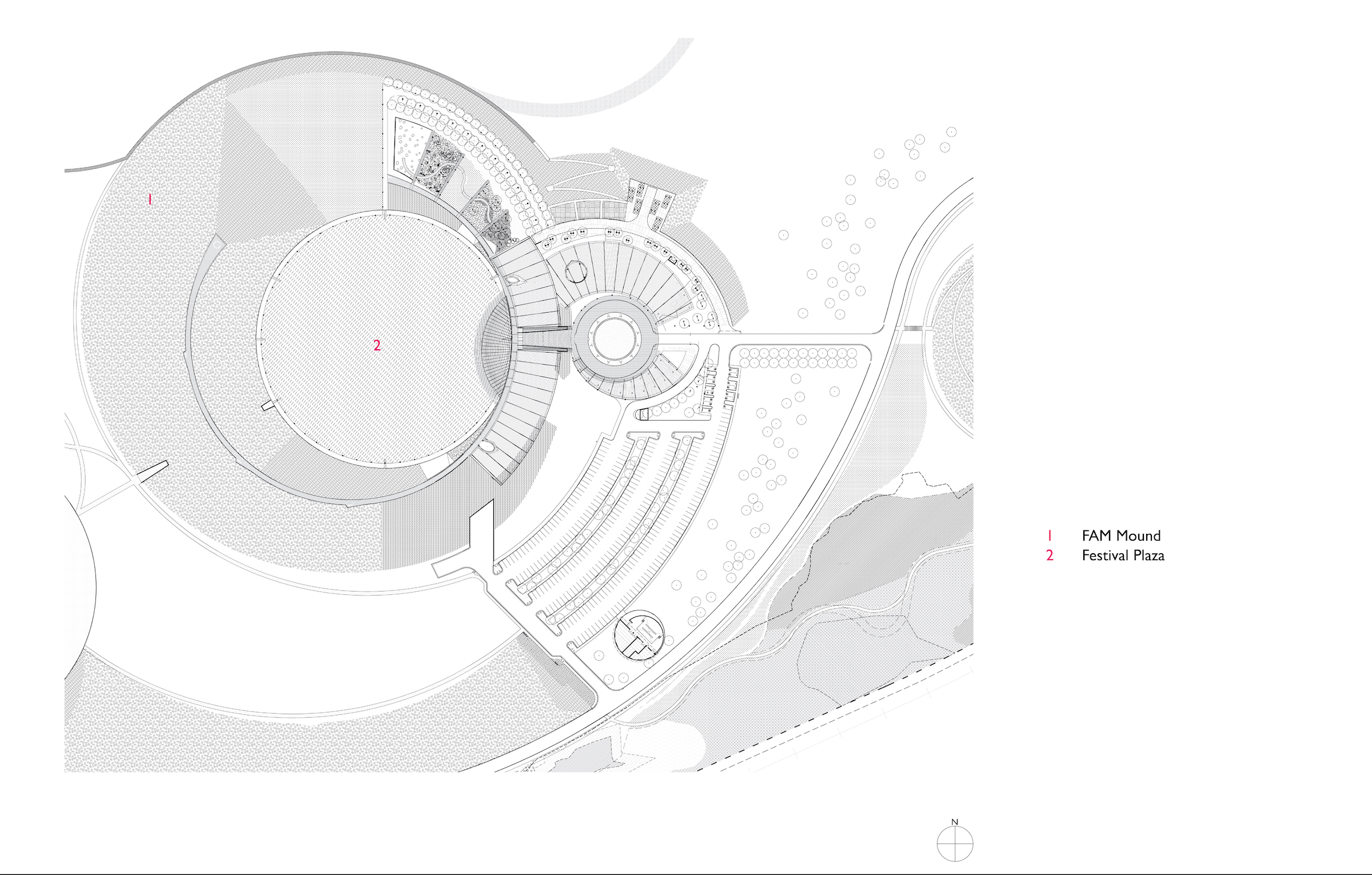
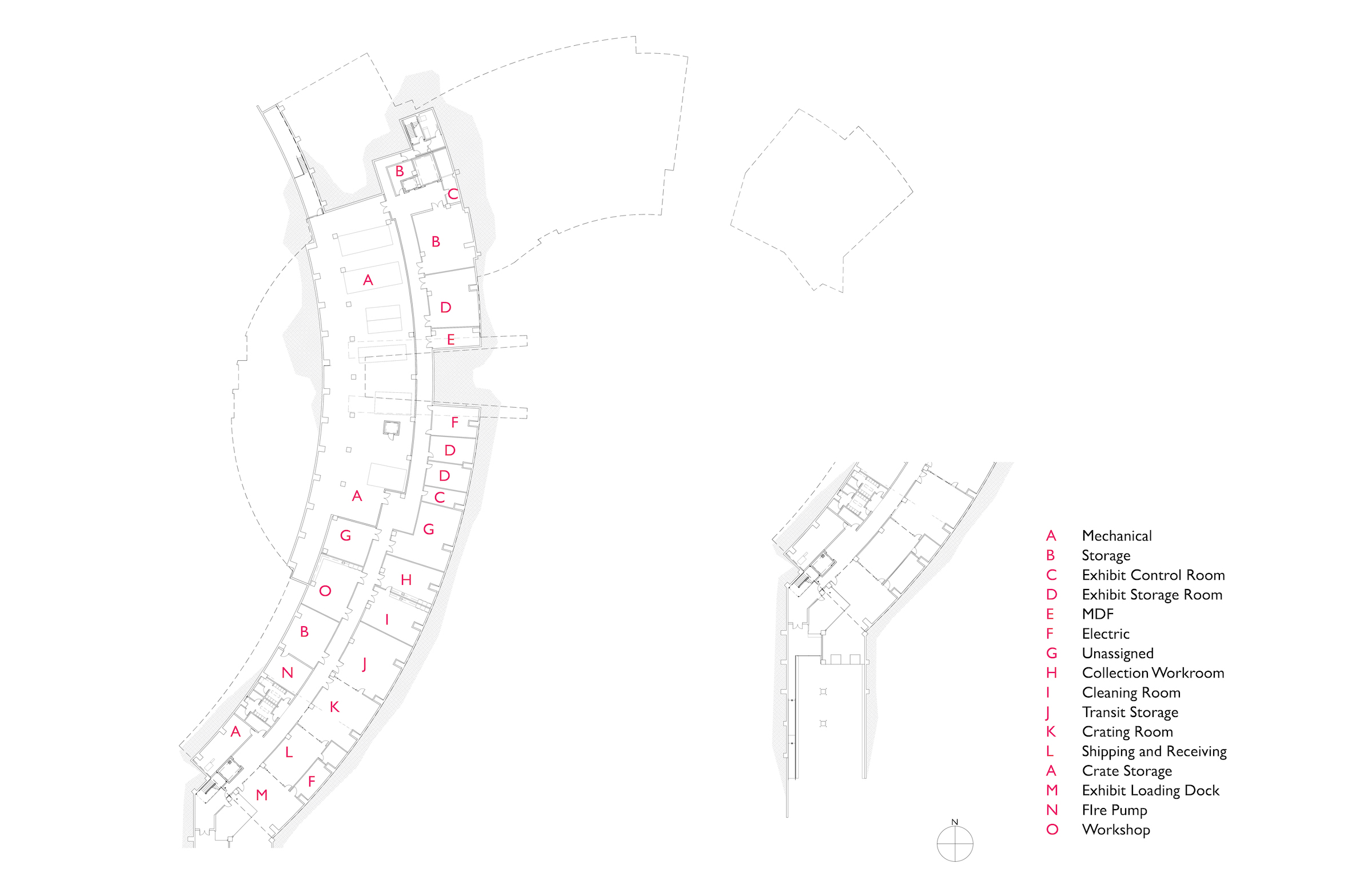
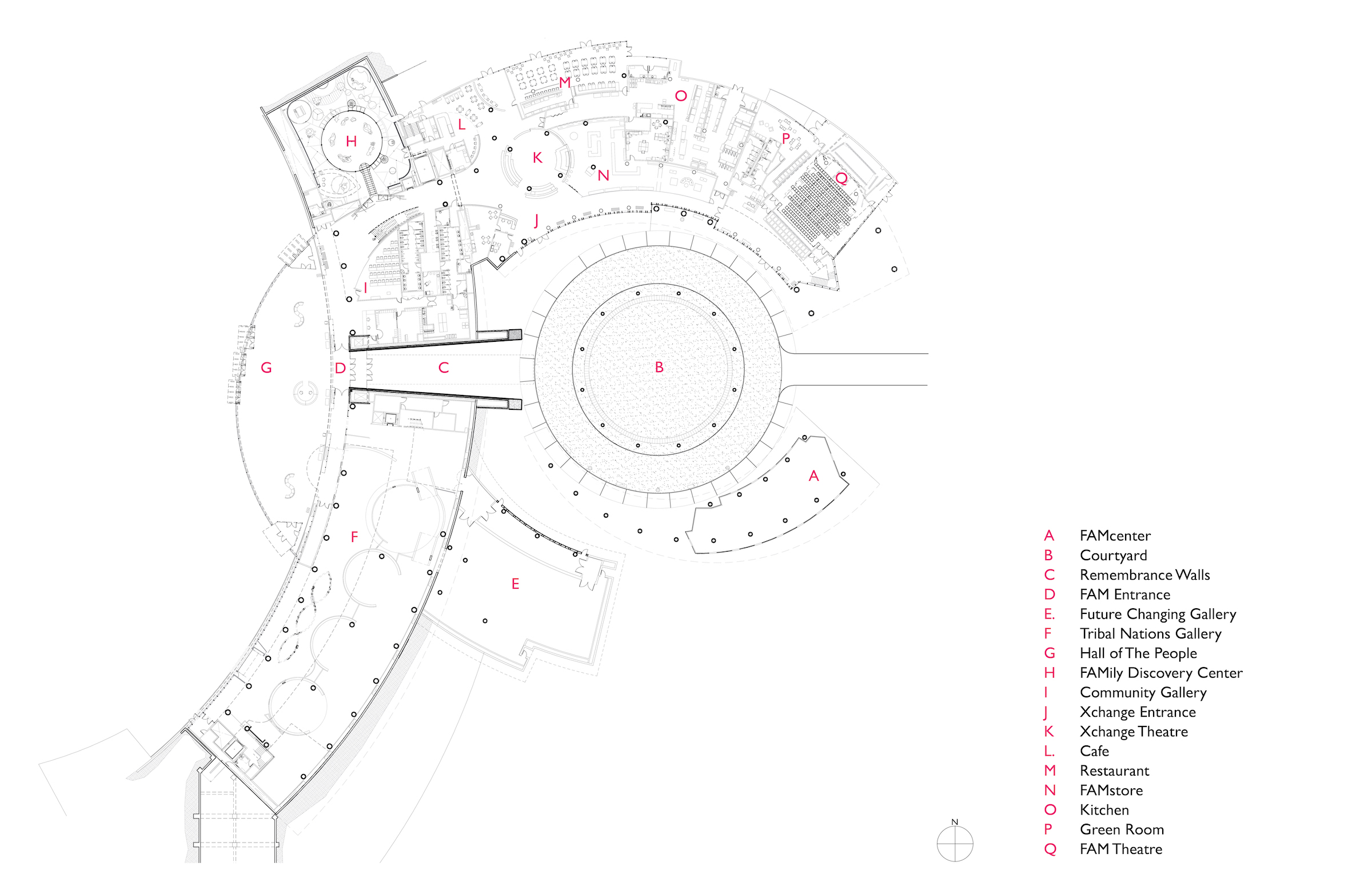

Related Stories
| Jun 25, 2013
DC commission approves Gehry's redesign for Eisenhower memorial
Frank Gehry's updated for a new Dwight D. Eisenhower memorial in Washington, D.C., has been approved by the Eisenhower Memorial Commission, reports the Washington Post. The commission voted unanimously to approve the $110 million project, which has been gestating for 14 years.
| Jun 5, 2013
USGBC: Free LEED certification for projects in new markets
In an effort to accelerate sustainable development around the world, the U.S. Green Building Council is offering free LEED certification to the first projects to certify in the 112 countries where LEED has yet to take root.
| Jun 3, 2013
Construction spending inches upward in April
The U.S. Census Bureau of the Department of Commerce announced today that construction spending during April 2013 was estimated at a seasonally adjusted annual rate of $860.8 billion, 0.4 percent above the revised March estimate of $857.7 billion.
| May 21, 2013
7 tile trends for 2013: Touch-sensitive glazes, metallic tones among top styles
Tile of Spain consultant and ceramic tile expert Ryan Fasan presented his "What's Trending in Tile" roundup at the Coverings 2013 show in Atlanta earlier this month. Here's an overview of Fasan's emerging tile trends for 2013.
| May 2, 2013
First look: UC-Davis art museum by SO-IL and Bohlin Cywinski Jackson
The University of California, Davis has selected emerging New York-based practice SO-IL to design a new campus’ art museum, which is envisioned to be a “regional center of experimentation, participation and learning.”
| Apr 30, 2013
Tips for designing with fire rated glass - AIA/CES course
Kate Steel of Steel Consulting Services offers tips and advice for choosing the correct code-compliant glazing product for every fire-rated application. This BD+C University class is worth 1.0 AIA LU/HSW.
| Apr 26, 2013
Documentary shows 'starchitects' competing for museum project
"The Competition," a new documentary produced by Angel Borrego Cuberto of Madrid, focuses on the efforts of five 'starchitects' to capture the design contract for the new National Museum of Art of Andorra: a small country in the Pyrenees between Spain and France.
| Apr 24, 2013
Los Angeles may add cool roofs to its building code
Los Angeles Mayor Antonio Villaraigosa wants cool roofs added to the city’s building code. He is also asking the Department of Water and Power (LADWP) to create incentives that make it financially attractive for homeowners to install cool roofs.
| Apr 23, 2013
Architects to MoMA: Don't destroy Williams/Tsien project
Richard Meier, Thom Mayne, Steven Holl, Hugh Hardy and Robert A.M. Stern are among the prominent architects who on Monday called for the Museum of Modern Art to reconsider its decision to demolish the former home of the American Folk Art Museum.
| Apr 17, 2013
First look: Renzo Piano's glass-domed motion pictures museum
The Academy of Motion Picture Arts and Sciences last week released preliminary plans for its $300 million Academy of Motion Picture Arts and Sciences museum in Los Angeles, designed by Renzo Piano and local architect Zoltan Pali.


